Index
Page 3 of 8
Radeon HD 5750 reference card comes with dual-slot cooling and a pretty quiet fan, which is placed within the aluminum block that leans on the GPU. The following picture shows the XFX 5750 740M 512MB DDR5 DP HDMI DUAL DVI PCI-E XXX – YHDA which is physically hardly different from the reference HD 5750.
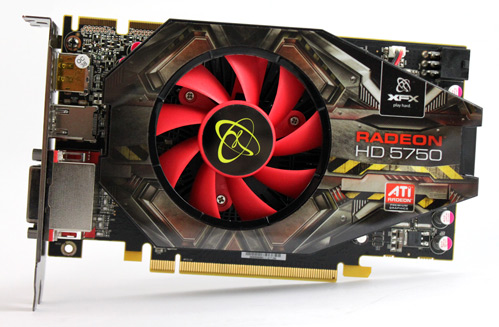
click to see larger picture
The only difference we see between our today’s card and the first XFX HD 5750 models with reference cooling is that the XFX 5750 512MB XXX’s cooling has sharp edges, unlike the curved edges on the reference models. Basically, the only difference is in the plastic hood, whereas the fan and the heatsink remained the same.
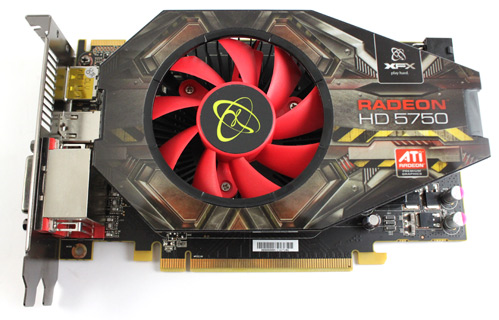
Cooling performance is enough to keep the HD 5750 740M 512MB XXX’s GPU temperatures in check. The fan is 7cm in diameter and the temperatures rarely exceed 82 degrees Celsius. The highest temperature we measured on the HD 5750 was 85 degrees Celsius, but those were measured in the most intensive tests. The cooler is very quiet in idle mode, and it wasn’t loud in 3D.
The XFX HD 5750 740M XXX card’s PCB is 18.2cm long, which is about 2/3 size of the Cypress HD 5870 card. The consumption isn’t very high and will hit 86W in worst case scenarios, which means that the card requires one 6-pin power connector. AMD uses power-saving tweaks that help the HD 5750 to draw only 16W in idle.
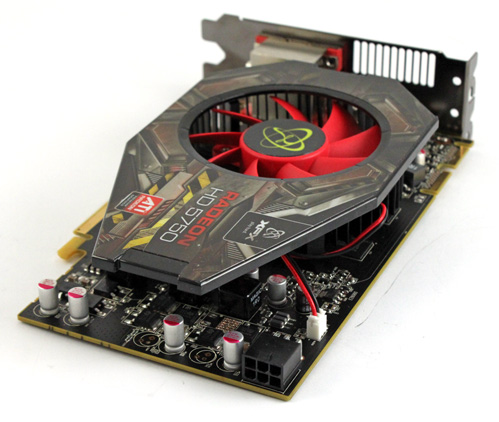
As you can see from the following picture, the cooler doesn’t touch the memory. Unlike the HD 5750 1GB, which has 512MB of memory on each side of the PCB, the HD 5750 512MB XXX’s memory is entirely on the GPU side of the PCB. We’re talking about 4 Hynix chips with peak clock rate at 1250MHz (5000MHz effectively).
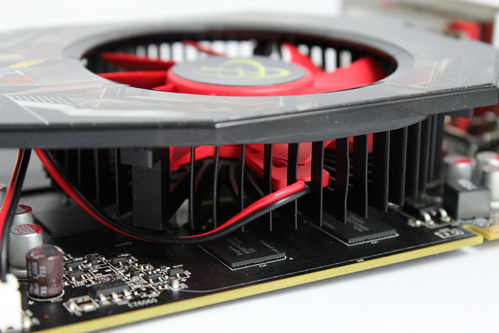
Apart from the option to chain up to three monitors on one card, the HD 5750 allows for using them as one monitor with a higher resolution spread across three monitors. The card comes with two dual-link DVI outs, one HDMI and one DisplayPort and they can be mixed for any combination of three digital outputs as long as one of the three outputs is DisplayPort. Otherwise you are limited to two DVI outputs or to one HDMI plus DVI output, or in other words – you can’t use DVI/DVI/HDMI combination.
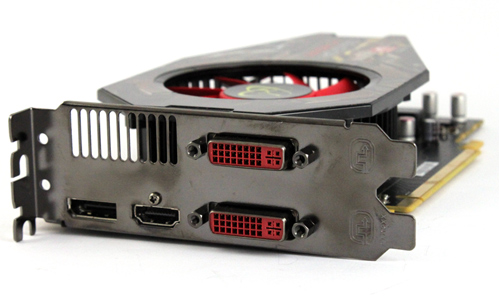
Crossfire performance scaling is getting better with each model, and this card supports this feature as well.

